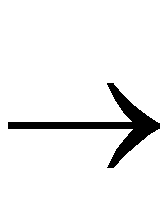FPGA Editor GuideChapter 3: Using the FPGA Editor
Saving a Design File
You can save your design at any time during an FPGA Editor session in one of these variations.
- Current design under the same name
- Current design with a different name
- Design as a macro library file
Note: The first two methods are described following. The procedure for saving a design as a macro library file is described in the “Working with Physical Macros” chapter.
With the Same Name
To save your current design, select File  Save. The current design file is written to disk.
Save. The current design file is written to disk.
With a Different Name
- Select File
 Save As to display the Save As dialog box, shown in the “Save As Dialog Box” figure of the “Menu Commands” chapter.
Save As to display the Save As dialog box, shown in the “Save As Dialog Box” figure of the “Menu Commands” chapter.
- Select the Design option.
- Enter the design name in the Design File field. If you do not enter the .ncd extension, it is automatically added to the file name.
You can save your design under a directory other than the current working directory. Type in the path name of the target directory in the Design File field, or use the browse button to select your target directory and specify your design file name.
- If applicable, enter the constraints file name for the design in the Physical Constraints File field, or use the browse button to select a directory and specify a file name.
If you do not enter a file name in the Constraints File field, a constraint file is saved with the same name as the .ncd file but with a.pcf extension. A constraints file is created only if there are existing constraints associated with your design.
- Click OK.
The dialog box closes, and the design file and constraints files are saved with the names you specified. The file name in the Title Bar at the top of the FPGA Editor window changes to indicate that this new file is currently displayed in the window. When you later save or exit the file, it is saved to the new file name, not the original file name.
![]() Save. The current design file is written to disk.
Save. The current design file is written to disk.